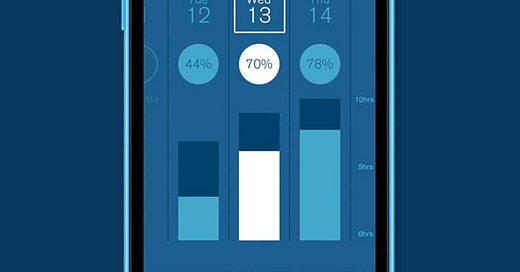How many of you have disturbed sleep? How many of you suffer from insomnia?
In my MS practice, insomnia is the most common sleep disorder I encounter, and it generally goes untreated. The reason is simply because most people with MS accept it as part of living with MS, and it is not prioritised by HCPs (healthcare professionals) who tend to focus on other MS-related problems.
Insomnia
Insomnia is defined as difficulty initiating or maintaining sleep and can be a symptom or a disorder. If a disorder, insomnia is associated with a feeling of distress about poor sleep, and it disrupts social or occupational functioning.
In the general population, ~10% of adults have insomnia disorder and another 15-20% report occasional insomnia, i.e. the symptom. In comparison, 40-50% of people with MS have insomnia.
Insomnia is more common in women and is associated with mental health and other medical problems. The most common MS-associated symptoms that are linked to insomnia are pain, neurogenic bladder, spasticity, restless legs, periodic limb movements, alcohol and stimulant misuse, menopausal symptoms, poor sleep hygiene (daytime napping), deconditioning (lack of exercise), anxiety and depression. All these MS-related problems can interfere with sleep initiation, maintenance, or perception.
Insomnia can be episodic or situational and tends to follow a persistent course in most people. Chronic insomnia in itself can cause depression and is associated in the general population with the development of hypertension and dementia. I suspect this applies to pwMS as well. Insomnia assessment, diagnosis, and management require a careful history to document its course, concomitant comorbidities, and potential contributing factors. I suspect many of you have never had your insomnia formally assessed.
A 24-hour history of sleep-wake behaviours can help identify additional behavioural and environmental factors for intervention. Patient-reported outcome measures and sleep diaries provide valuable information about the nature and severity of insomnia, help screen for other sleep disorders, and monitor treatment progress.
A sleep diary should collect information on your sleep cycle (bedtime, arising time, napping) and estimates of your sleep-wake characteristics, i.e. sleep latency (how long it takes to fall asleep), number and duration of awakenings, and an estimated sleep time. Useful PROMS included the Insomnia Severity Index, Pittsburgh Sleep Quality Index, STOP–Bang questionnaire for evaluating the risk of sleep apnoea and the International Restless Legs Syndrome Rating Scale.
Management
If you have any MS-related symptoms that can affect sleep, these need to be managed accordingly. How can you treat insomnia if your sleep is interrupted by anxiety-related rumination, nocturia, pain, leg spasms, restless legs, inability to roll over in bed, vasomotor menopausal symptoms and poor sleep hygiene?
I would start with the following simple self-help guide to improve your sleep hygiene:
Ensure you spend an appropriate amount of time asleep, at least 6 hours in bed. Some people need more than this to feel refreshed.
Limit daytime naps to 30 minutes. Please note that napping does not make up for inadequate nighttime sleep.
Avoid stimulants such as caffeine, modafinil and nicotine close to bedtime.
Only drink alcohol in moderation. Alcohol is well-known to help you fall asleep faster, but too much disrupts sleep.
Exercise helps improve sleep quality. As little as 10 minutes of aerobic exercise daily can enhance sleep quality.
Don’t eat before going to bed. Heavy foods and fizzy drinks can trigger indigestion or heartburn/reflux, which can disrupt sleep.
Ensure you get adequate exposure to natural light; sunlight during the day and darkness at night help maintain a regular sleep-wake cycle.
Establish a regular relaxing bedtime routine, which helps the body recognise it is bedtime. This could include taking a shower or bath or reading. However, avoid reading or watching emotionally upsetting content before attempting to sleep.
Make sure that your sleep environment is pleasant. Your mattress and pillows should be comfortable. The bedroom should be cool for optimal sleep (16-20°C). The bright light from lamps, smartphones and television screens can make it difficult to fall asleep, so turn those lights off or adjust them when possible. Use the blue filter mode on your smartphone and other devices to reduce the inhibition of melatonin from light. Consider using blackout curtains, eyeshades, earplugs, white noise machines and other devices to make the bedroom more relaxing.
If this should fail, other current treatment options include prescribed and over-the-counter (OTC) medications, cognitive behavioural therapy for insomnia (CBTI), and complementary and alternative therapies.
I would avoid over-the-counter sedatives, as these tend to be first-generation antihistamines with potent centrally acting anticholinergic effects that affect cognitive function and long-term brain health (please see ‘Your anticholinergic burden’, 08-Jul-2021).
Some pwMS self-medicate with OTC melatonin, CBD (cannabidiol) and THC (tetrahydrocannabinol) preparations. Please be aware that melatonin has a U-response curve for some people; therefore, lower doses may be better than higher doses. In general, I can’t recommend the use of CBD and THC for insomnia. However, if my patients find these work, who am I to say stop taking them? If you do buy CBD and THC, please try and use a reputable supplier and preferably pharmaceutical-grade products. Medicinal cannabis cannot be prescribed on the NHS but can be obtained via several private clinics. I know it is available online; many patients purchase it this way. As a doctor, I can’t recommend buying it this way. Please be aware that CBD is a drug and is associated with liver toxicity. CBD may interact with your other medications.
If you raise the issue with your HCP, they often reach for the prescription pad. Before accepting a sedative, please ensure you have optimised all of the above and know its limitations. Sedatives are only a short-term solution; they work well for about 4-5 days before you develop tachyphylaxis and need higher doses. Tachyphylaxis refers to the rapidly diminishing response to successive doses of a drug, rendering it less effective. Once you build tachyphylaxis and stop taking sedatives, you may have rebound insomnia. Benzodiazepines (e.g. diazepam) are pretty addictive, and in general, most doctors avoid using them for insomnia. However, there is still a role for them when insomnia is part of acute anxiety. The goto sedatives are the so-called z-drugs (zolpidem, zopiclone, zaleplon and eszopiclone). Zopiclone and eszopiclone have a longer half-life and work for 5-6 hours. In comparison, zolpidem and zaleplon act for a much shorter period (1-3 hours).
Many neurologists still use tricyclic antidepressants, such as amitriptyline, as sedatives. I have largely stopped this practice unless there is another reason for using a tricyclic, for example, to help with pain management. I have primarily replaced amitriptyline with duloxetine in my clinical practice for pain management. Duloxetine is a serotonin-noradrenaline reuptake inhibitor and has much fewer anticholinergic side effects than tricyclics. For those of you taking amitriptyline or another tricyclic, please read my newsletter ‘Amitriptyline: the neurologist's dirty little secret’ (29-Sept-2021).
Please be aware that antispasticity agents such as baclofen and gabapentinoids (gabapentin and pregabalin) also help sleep. However, these agents should only used for insomnia if you have spasticity or, in the case of the gabapentinoids, spasticity and/or pain that needs to be managed.
Psychiatrists and some neurologists use sedating antipsychotics to help with insomnia. This practice is widespread and has been heavily criticised, but there is a role for it in patients with cognitive issues or significant psychiatric problems. The older generation antipsychotics, for example, haloperidol, have now been replaced by safer drugs such as quetiapine and olanzapine. Sadly, as a neurologist, I have seen too many severe adverse events because of the liberal use of antipsychotics as sedatives. In my opinion, there needs to be a good reason for someone to be prescribed an antipsychotic, and insomnia in isolation is not one of them.
The good news is that there is a new class of sedatives on the market in some countries. These are the dual orexin receptor antagonists (ORAs); suvorexant, lemborexant and daridorexant. Daridorexant is NICE-approved for use in the NHS. Daridorexant is recommended for treating insomnia in adults with symptoms lasting for three nights or more per week for at least three months and whose daytime functioning is considerably affected and only if CBTi has been tried but not worked, or CBTi is not available or is unsuitable. I have no experience prescribing ORAs, but they are at least something new to help insomniacs.
Cognitive Behavioural Therapy for Insomnia (CBTI)
Only some patients receive CBTI due to a lack of adequately trained therapists. CBTI aims to change your behaviour and psychological factors (e.g., anxieties and unhelpful beliefs about sleep) that contribute to insomnia. At the core of CBTI are behavioural and sleep-scheduling strategies (sleep restriction and stimulus control instructions), relaxation methods, psychological and/or cognitive interventions to change unhelpful beliefs and excessive worrying about insomnia, and sleep hygiene education. The following are the components of CBTI
Sleep restriction: Limit the time you spend in bed to match your sleep time as closely as possible. After the initial restriction, the sleep window can be gradually adjusted upward or downward every week as a function of sleep efficiency (time asleep÷time spent in bed×100) until an appropriate sleep duration is established.
Stimulus control: You need to follow a set of instructions designed to reinforce the association between bedtime and bedroom stimuli with sleep and to reestablish a consistent sleep-wake schedule:
Go to bed only when you feel sleepy
Get out of bed when you are unable to sleep
Use the bed and bedroom for sleep and sex only; do not use your bed for reading, watching television, etc.
Try and get up at the same time every morning
Avoid napping
Relaxation training: Try using different procedures to reduce arousal, muscle tension, and intrusive thoughts that interfere with sleep, such as progressive muscle relaxation and imagery training. Relaxation procedures need to be practised daily over a few weeks.
Cognitive therapy: This is a psychological approach to revising many common misconceptions about sleep and reframing unhelpful beliefs about insomnia and its daytime consequences. This method also reduces excessive worrying about sleep difficulties and their daytime consequences. Additional cognitive strategies include paradoxical intention (willingly trying to stay awake rather than trying to fall asleep) to alleviate the performance anxiety triggered by attempting to force sleep.
Sleep hygiene education: These are the general guidelines about health practices mentioned above and in many other MS-Selfie newsletters. For example, diet, exercise, substance use, and optimising environmental factors (e.g., light level, noise, and excessive temperature) that may promote or interfere with sleep are included (see above).
Acceptance and commitment therapy (ACT): ACT is a form of psychotherapy that aims to educate people to stay focused on the present moment and accept life experiences, thoughts, and feelings (even negative ones) without trying to change them. ACT involves using different methods (e.g., acceptance, defusion, mindfulness, and committed action) and processes to increase psychological flexibility.
Mindfulness: This meditation method involves observing one’s thoughts and feelings and letting go of the need to change or ruminate. Originally designed to reduce stress and anxiety, mindfulness has been adapted for the management of insomnia and can be included as one component of ACT.
Brief behavioural treatments for insomnia: This abbreviated version of CBT-I emphasises behavioural components and is typically implemented in fewer sessions. It involves education about sleep regulation, factors that promote or interfere with sleep, and a tailored behavioural prescription based on stimulus control and sleep restriction therapy.
Please note that CBTI is focused on sleep and oriented toward problem-solving. A psychologist typically guides you through CBTI over roughly six consultations. There are several variants in the methods for implementing CBTI, including shorter formats, group therapy, using other providers such as counsellors and specialist nurses, and using telehealth digital platforms, including smartphone applications.
eCBTI
Digital CBTI (eCBTI) is becoming increasingly popular. The Sleepio application, recommended and covered by the NHS, has a positive effect on several sleep outcomes and is said to be as effective as medication. NICE recommends Sleepio as a cost-saving option for treating insomnia and insomnia symptoms in primary care for people who would otherwise be offered sleep hygiene or sleeping pills. A medical assessment should be done before referral to Sleepio for people who may be at higher risk of other sleep disorder conditions, such as during pregnancy or in people with comorbidities. These are other eCBTI applications that some of you may have tried. I would be interested to hear if you found any of them helpful.
To explore how common sleep problems are in pwMS with a focus on insomnia, I would appreciate it if you could complete the short MS-Selfie survey. The results of these surveys have, in the past, led to MS service changes and developments, which is why completing them makes a difference and has an impact. For example, the medical gaslighting survey has led to publications and educational programmes.
As always, I am very keen to hear your stories about living with insomnia and how you have managed to self-manage this often disabling symptom. Thank you.
Subscriptions and donations
MS-Selfie newsletters and access to the MS-Selfie microsite are free. In comparison, weekly off-topic Q&A sessions are restricted to paying subscribers. Subscriptions are being used to run and maintain the MS Selfie microsite, as I don’t have time to do it myself. You must be a paying subscriber if people want to ask questions unrelated to the Newsletters or Podcasts. If you can’t afford to become a paying subscriber, please email a request for a complimentary subscription (ms-selfie@giovannoni.net).
Important Links
X (Twitter) / LinkedIn / Medium
General Disclaimer
Please note that the opinions expressed here are those of Professor Giovannoni and do not necessarily reflect the positions of Queen Mary University of London or Barts Health NHS Trust. The advice is intended as general and should not be interpreted as personal clinical advice. If you have problems, please tell your healthcare professional, who will be able to help you.















Share this post